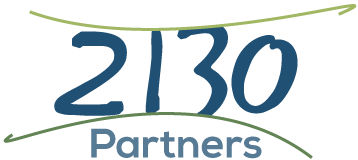 Building on my recent blog about leading your strategic mind, let's investigate the next step in developing your capacity to lead from authentic purpose. I'm going to use a Star Trek reference to call this work "shields down" or "de cloaking." The shields in Star Trek were to protect the ship from enemy fire and cloaking was to make the ship invisible. I suggest that as a leader, it’s worthwhile to investigate how these two notions operate in your life.
In her book and TED talk, "Lessons From The Mental Hospital," Glennon Doyle Melton demonstrates having done masterful work in recovering her super sensitive, highly aware youthful self after sliding into bulimia, alcoholism and drug addiction to kill the pain of the messy world in which we live. She calls those addictions "superhuman capes," strategies to repel the hurts and become invisible. The key to her recovery was her commitment to be present to her fear and pain and be willing to engage with the "real world."
Building on my recent blog about leading your strategic mind, let's investigate the next step in developing your capacity to lead from authentic purpose. I'm going to use a Star Trek reference to call this work "shields down" or "de cloaking." The shields in Star Trek were to protect the ship from enemy fire and cloaking was to make the ship invisible. I suggest that as a leader, it’s worthwhile to investigate how these two notions operate in your life.
In her book and TED talk, "Lessons From The Mental Hospital," Glennon Doyle Melton demonstrates having done masterful work in recovering her super sensitive, highly aware youthful self after sliding into bulimia, alcoholism and drug addiction to kill the pain of the messy world in which we live. She calls those addictions "superhuman capes," strategies to repel the hurts and become invisible. The key to her recovery was her commitment to be present to her fear and pain and be willing to engage with the "real world."
Her moving presentation becomes personal to the rest of us when she defines the "superhuman cape" as anything that protects our vulnerability. So what's your superhuman cape? A technical or advanced degree? Extreme athletic conditioning? Intellectual capacities? Hard ball attitude? Results-only focus? Workaholism?.I could go on and on but it’s worthwhile effort for you to stand back and see yours. If you don't know how you keep people and the pain of this messy life that makes up real reality at bay, find an honest person who knows you and ask them.
If you've been hiding behind your superhuman cape you may find it nearly impossible to consider setting it aside. Melton speaks to the enormous courage required and borrows a definition from Dr. Brene Brown, "courage is to tell the story of who you are with your whole heart."
Let's juxtapose that definition with another that I refer to constantly from David Whyte, "Courage Is developing a friendship with the unknown." It is going to take a lot of friendship with the unknown for you to de-cloak who you really are with your whole heart because you don't know what will happen. To make matters worse, you have probably recorded painful past experiences or experienced a lot of bad outcomes that justify your hiding inside your supercape.
So what makes it worthwhile? It allows them to share your authentic purpose and choose to freely support you. It strips out the pretense that often goes on and gets in the way of productive interactions. It allows them to risk putting their shields down too. Best of all, it lets you out of your own prison into the light of personal freedom.
Melton declares that the prizes to be won for being vulnerable are peace, dignity & friendship. Imagine how productively you, your team and your family can interact with those prizes in hand!

 “Leaders have to recognize what everyone is saying and also be the catalyst that will call out not what makes people happy but what needs to be done to move forward." - Dr. Speciosa Wandira-Kazibwe, Former Vice President of Uganda
I
“Leaders have to recognize what everyone is saying and also be the catalyst that will call out not what makes people happy but what needs to be done to move forward." - Dr. Speciosa Wandira-Kazibwe, Former Vice President of Uganda
I  The longer I work with leaders the more I see how often they damage or destroy great opportunities by failing to deal with their own “inner demons” or limiting beliefs. I witness damage not just to their companies, but to their personal lives. One of my CEO clients is now entering the divorce process after only recently telling me what a great relationship he had. Turns out his wife feels like she can’t trust him in ways that are important to her and he didn’t even see it.
In this complex day and age self-awareness is a requirement of leaders and leadership. In order to be really effective at the level now required, you need to have an objective understanding of what you are good at, what you are not good at, how well you do or don’t connect with people, what kind of impact or “wake” you leave behind when you exit a meeting, how you handle conflict and stress, how you manage your personal reactivity and more. This level of self-understanding enables you to successfully make better choices for yourself, your team and your organization. Even Richard Branson is acknowledging the importance of self-awareness for leaders in a
The longer I work with leaders the more I see how often they damage or destroy great opportunities by failing to deal with their own “inner demons” or limiting beliefs. I witness damage not just to their companies, but to their personal lives. One of my CEO clients is now entering the divorce process after only recently telling me what a great relationship he had. Turns out his wife feels like she can’t trust him in ways that are important to her and he didn’t even see it.
In this complex day and age self-awareness is a requirement of leaders and leadership. In order to be really effective at the level now required, you need to have an objective understanding of what you are good at, what you are not good at, how well you do or don’t connect with people, what kind of impact or “wake” you leave behind when you exit a meeting, how you handle conflict and stress, how you manage your personal reactivity and more. This level of self-understanding enables you to successfully make better choices for yourself, your team and your organization. Even Richard Branson is acknowledging the importance of self-awareness for leaders in a  At a breakfast meeting during the recent
At a breakfast meeting during the recent  At a recent
At a recent  One of the essential steps to increased leadership effectiveness and more productive interactions is “acceptance” (both of ourselves and others). While it’s easy to say, our work with clients and
One of the essential steps to increased leadership effectiveness and more productive interactions is “acceptance” (both of ourselves and others). While it’s easy to say, our work with clients and  When members of our society organize to accomplish goals, they typically choose between two major domains – the “For-Profit” and the “Not-for-Profit” worlds. We tend to believe each of these worlds is very different and “ne’er the twain shall meet.”
Is this division useful and valuable or limiting and restrictive for a vast number of participants? Is it real or is it largely just perception? The for-profit world is supposedly where the tough and the self-serving duke it out for money. The non-profit world is supposedly where people who care go to make a difference in the world and be of selfless service. Furthering the depth of the chasm between the two, there is generally little cross-over or sharing of ideas. Yes, the tax laws and the accounting world have drawn a completely separate set of rules for each, but the divide extends much further to commonly include separate recruiting and training channels,
When members of our society organize to accomplish goals, they typically choose between two major domains – the “For-Profit” and the “Not-for-Profit” worlds. We tend to believe each of these worlds is very different and “ne’er the twain shall meet.”
Is this division useful and valuable or limiting and restrictive for a vast number of participants? Is it real or is it largely just perception? The for-profit world is supposedly where the tough and the self-serving duke it out for money. The non-profit world is supposedly where people who care go to make a difference in the world and be of selfless service. Furthering the depth of the chasm between the two, there is generally little cross-over or sharing of ideas. Yes, the tax laws and the accounting world have drawn a completely separate set of rules for each, but the divide extends much further to commonly include separate recruiting and training channels,  There is an expression I hear regularly around the table of the executive meetings I lead. It is “I have to___” (fill in the blank). To me, this comment comes from the “survival brain.” It is born in burden and sacrifice and it is a close cousin to “I should,” “I ought to,” “I gotta” etc. In addition, these openers carry an “unsaid” piece that follows on – something like “…but I can’t” or …”we don’t have the money and/or time”…”they won’t let me, etc.” When I hear the, “I have to…” it usually comes from a place of feeling victimized or overwhelmed and I know nothing fruitful will come of it.
This conversational pattern passes for normal and quite often will get you off the hook of further questioning from peers. It lets your own mind off the hook for performance. It also masks the real consequences of failure to act, failure to produce the results in question, or failure to have that important, scary conversation that’s being avoided. Needless to say, there will be consequences!
There is an expression I hear regularly around the table of the executive meetings I lead. It is “I have to___” (fill in the blank). To me, this comment comes from the “survival brain.” It is born in burden and sacrifice and it is a close cousin to “I should,” “I ought to,” “I gotta” etc. In addition, these openers carry an “unsaid” piece that follows on – something like “…but I can’t” or …”we don’t have the money and/or time”…”they won’t let me, etc.” When I hear the, “I have to…” it usually comes from a place of feeling victimized or overwhelmed and I know nothing fruitful will come of it.
This conversational pattern passes for normal and quite often will get you off the hook of further questioning from peers. It lets your own mind off the hook for performance. It also masks the real consequences of failure to act, failure to produce the results in question, or failure to have that important, scary conversation that’s being avoided. Needless to say, there will be consequences! A colleague of mine recently joined the Board of Directors of a favorite non-profit with much enthusiasm, only to discover how much drama was going on behind the scenes among the Board members. She has found herself in the middle of one of the top issues that diminish team effectiveness – “the undiscussables.” The stories she has shared with me are very similar to those I have heard over and over in my practice from CEO clients about issues within their teams.
A lot of money and time gets spent creating what appears to be shared vision, mission, values, and alignment. But what happens when all that work isn’t enough? What happens when the team remains dysfunctional even though they appear to share the stated vision, values, and desired outcomes? What lies beneath are the “real issues” or “undiscussables” that were not addressed in the planning sessions or consultants’ work.
A colleague of mine recently joined the Board of Directors of a favorite non-profit with much enthusiasm, only to discover how much drama was going on behind the scenes among the Board members. She has found herself in the middle of one of the top issues that diminish team effectiveness – “the undiscussables.” The stories she has shared with me are very similar to those I have heard over and over in my practice from CEO clients about issues within their teams.
A lot of money and time gets spent creating what appears to be shared vision, mission, values, and alignment. But what happens when all that work isn’t enough? What happens when the team remains dysfunctional even though they appear to share the stated vision, values, and desired outcomes? What lies beneath are the “real issues” or “undiscussables” that were not addressed in the planning sessions or consultants’ work. Are you missing out on a powerful source of creativity by overlooking the introverts in your organization and the way they work best?
Susan Cain has a wonderful
Are you missing out on a powerful source of creativity by overlooking the introverts in your organization and the way they work best?
Susan Cain has a wonderful  In a USA Today article entitled, “
In a USA Today article entitled, “ The Pacific Northwest Vistage Chairs have been using a powerful system called “The Enneagram” for their own development and for some of their groups. For those who have not heard of it, The Enneagram has been around since at least the 4th century. It is a system that identifies nine core life strategies, made up of habits of emotion and thought, that each of us uses to navigate life. The Enneagram is quite different from personality tests or even typical diagnostics. It’s a very rich system that gives people access to much deeper self-awareness and the possibility of positive change. Some of the most valuable things I’ve noticed about using The Enneagram are:
The system identifies 9 different enneatypes, or 9 different points-of-view, and that helps create compassion both for self and others. Once you realize that people just have different focuses of attention, that they are reacting from deeply engrained habits, and that you are doing the same thing, other people’s behavior doesn’t seem so unexplainable.
The Pacific Northwest Vistage Chairs have been using a powerful system called “The Enneagram” for their own development and for some of their groups. For those who have not heard of it, The Enneagram has been around since at least the 4th century. It is a system that identifies nine core life strategies, made up of habits of emotion and thought, that each of us uses to navigate life. The Enneagram is quite different from personality tests or even typical diagnostics. It’s a very rich system that gives people access to much deeper self-awareness and the possibility of positive change. Some of the most valuable things I’ve noticed about using The Enneagram are:
The system identifies 9 different enneatypes, or 9 different points-of-view, and that helps create compassion both for self and others. Once you realize that people just have different focuses of attention, that they are reacting from deeply engrained habits, and that you are doing the same thing, other people’s behavior doesn’t seem so unexplainable. Recently I was returning from vacation and while sitting on our flight home, the line "...hints at his bad-but-not-too-bad-boy persona" grabbed my attention. It was in an
Recently I was returning from vacation and while sitting on our flight home, the line "...hints at his bad-but-not-too-bad-boy persona" grabbed my attention. It was in an  From moment to moment, which comes first with you, the transaction or the person with whom you are dealing? This simple distinction may be impacting your leadership effectiveness, your team’s morale and passion, and any possibility of shared vision. While transaction first is pretty common in the USA, some cultures won't engage with you if you start there.
Recently during dinner with a dear friend who lives on
From moment to moment, which comes first with you, the transaction or the person with whom you are dealing? This simple distinction may be impacting your leadership effectiveness, your team’s morale and passion, and any possibility of shared vision. While transaction first is pretty common in the USA, some cultures won't engage with you if you start there.
Recently during dinner with a dear friend who lives on  One of the most remarkable misunderstandings in today’s leadership thinking is the instant, automatic, and unexamined assumption that going faster and faster, doing more and more in less time, leads to success. This is something author
One of the most remarkable misunderstandings in today’s leadership thinking is the instant, automatic, and unexamined assumption that going faster and faster, doing more and more in less time, leads to success. This is something author  “The degree to which you are willing to be open and therefore vulnerable strongly influences the degree to which others feel connected to you, are inspired by you, and are willing to trust you and your leadership.”
When I look back and reflect on my experiences with others’ leadership, a high point occurred while I was on an
“The degree to which you are willing to be open and therefore vulnerable strongly influences the degree to which others feel connected to you, are inspired by you, and are willing to trust you and your leadership.”
When I look back and reflect on my experiences with others’ leadership, a high point occurred while I was on an  So many of the CEOs and Key Executives in my
So many of the CEOs and Key Executives in my 

